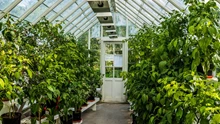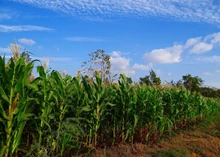
Towards the food security. In view of the increasing population in 2030 and 2050, the World Agri scientist are already working on the concept if land is not available, then the vertical farming and Hydroponics are the solution.
The scientists at the University of Nottingham, UK had given the idea of cultivation and growing the crops in the coal mines.
Dr A P J Abdul Kalam had given the idea of growing Jetropha near the Railway track. The idea of using the abandoned land is the innovative idea to have the crop, where no one has thought of.
The advantage of this would be that, in addition to using the empty spaces, vegetable cultivation underground would not be dependent on the weather. Through artificial lighting and irrigation, the seasons would become completely irrelevant. This year's summer has shown how much agriculture still depends on the weather and due to climate change, more and more of such events are expected in the future.

The world population is growing steadily and with it, the food it requires. At the same time, traditional ways of growing food are becoming increasingly uncertain because of drought and other extreme weather events. More people are moving to urban areas where there is no room for large fields and so regional cultivation is not an option Scientists at the University of Nottingham have now presented a possible solution: Vertical Farming underground. In the UK there are 150,000 abandoned coal shafts. As Professor Saffa Riffat told the BBC, these could be used for so-called 'underground farming'. This means that vegetables could be grown on shelves in these shafts.
According to Riffat, a 7 m2 shaft could produce 80 tons of food per year. That's eight to ten times as much as on the same area of land above ground. All vacant shafts in the UK combined cover some 25,000 square kilometers. So there is a huge potential. The scientist estimates the costs per shaft to be at around 33,000 euros.










